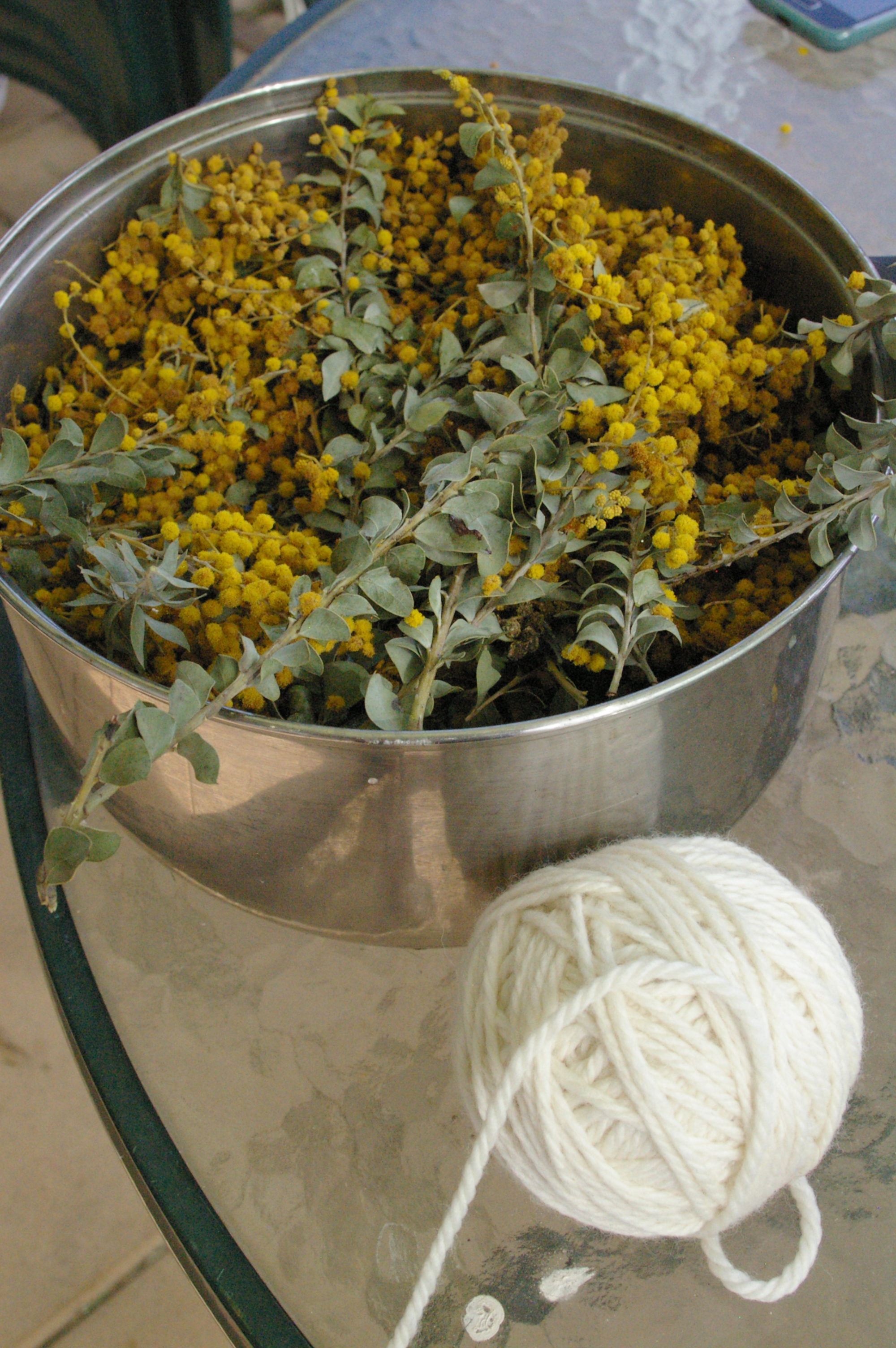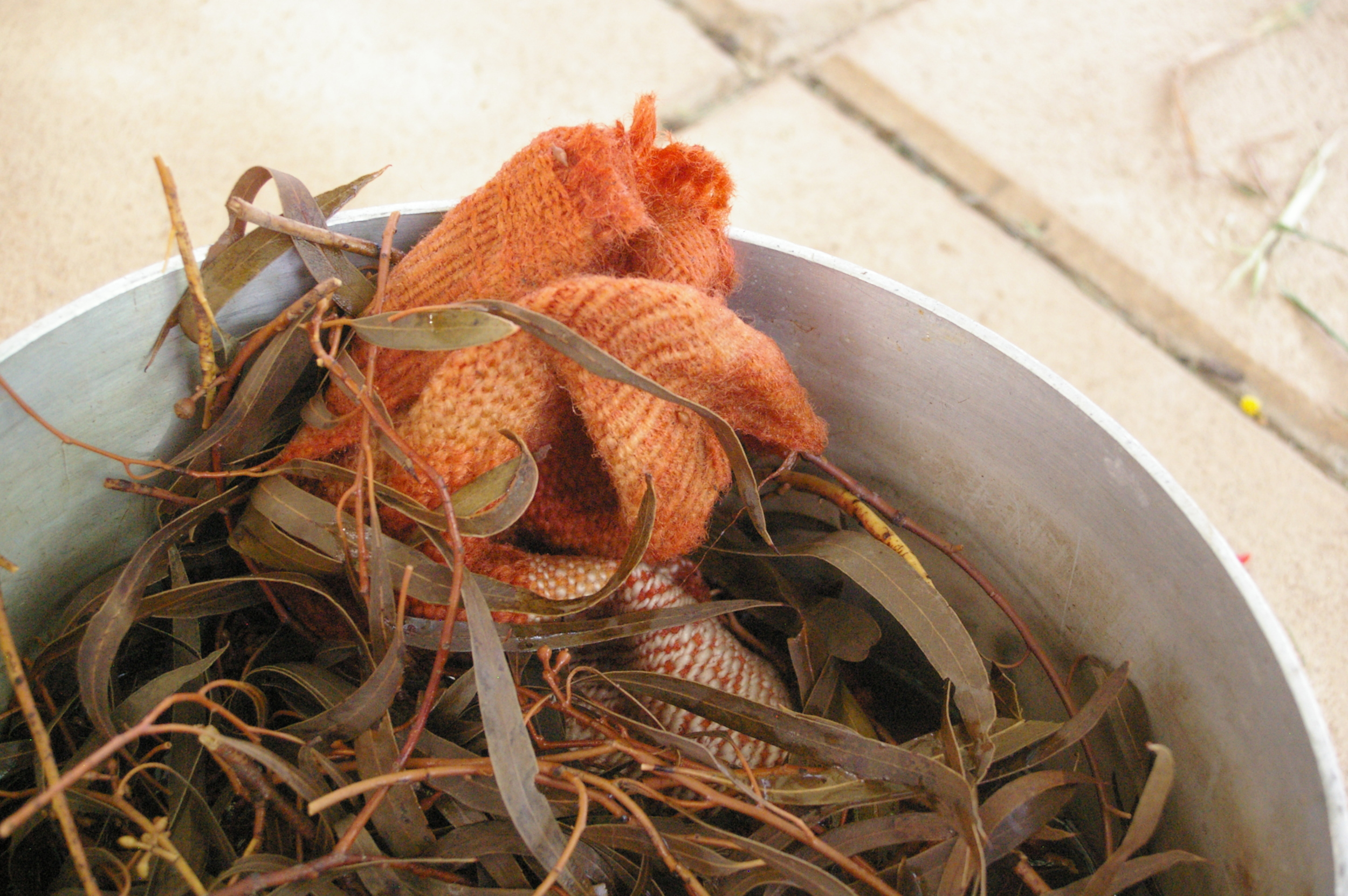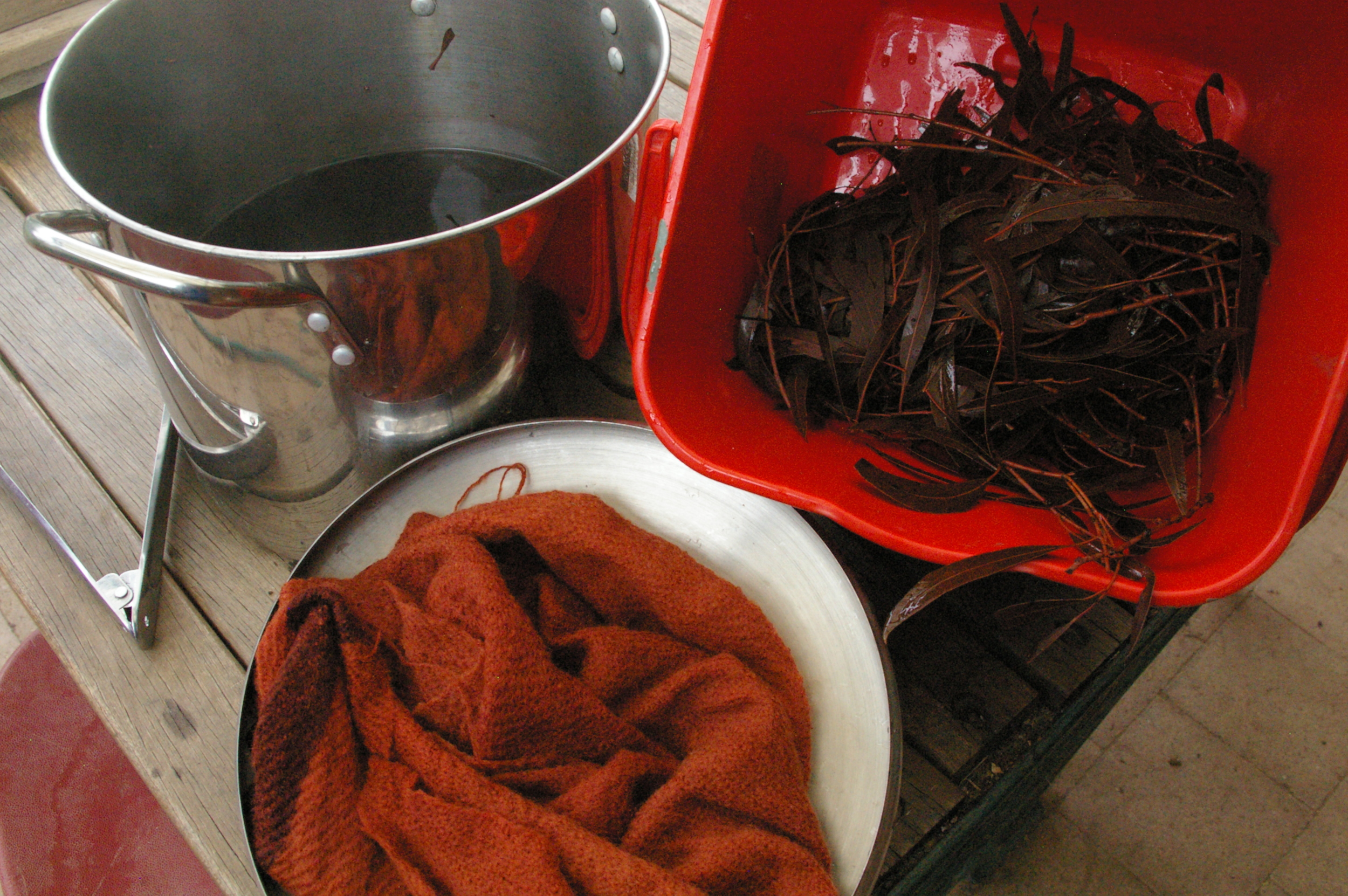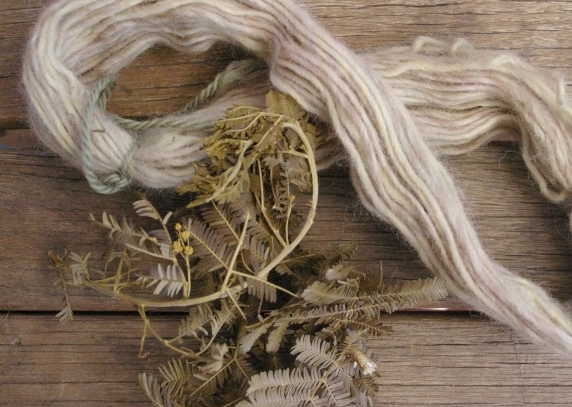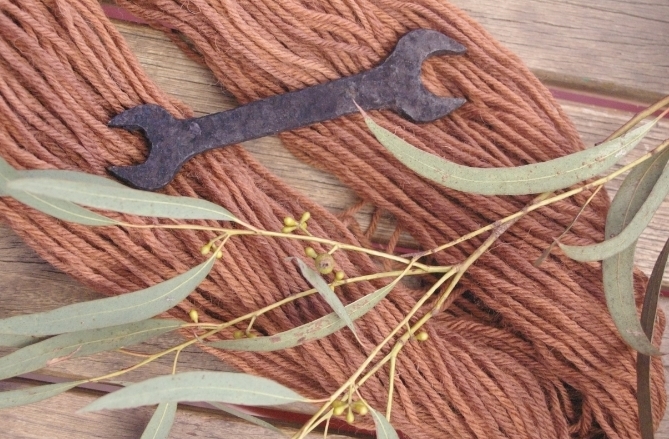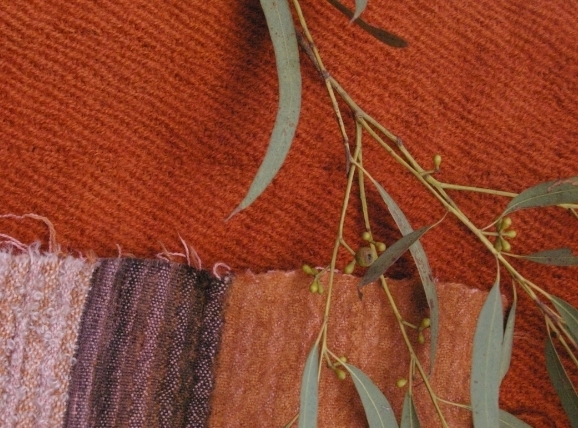More fun with Natural Dyes.
A continuation of experiments with natural dyestuffs this time adding some different mordants to see how the colours are affected.
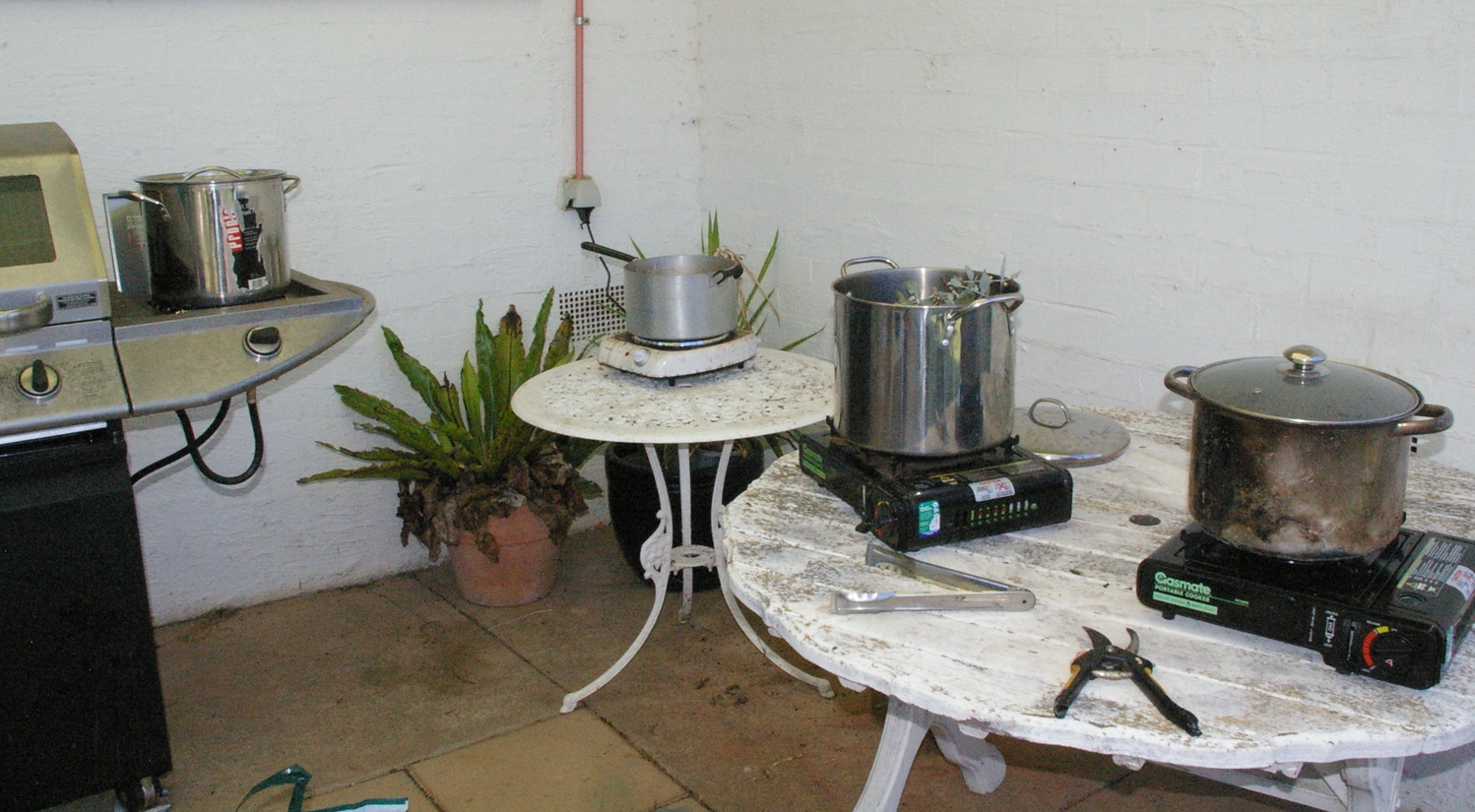

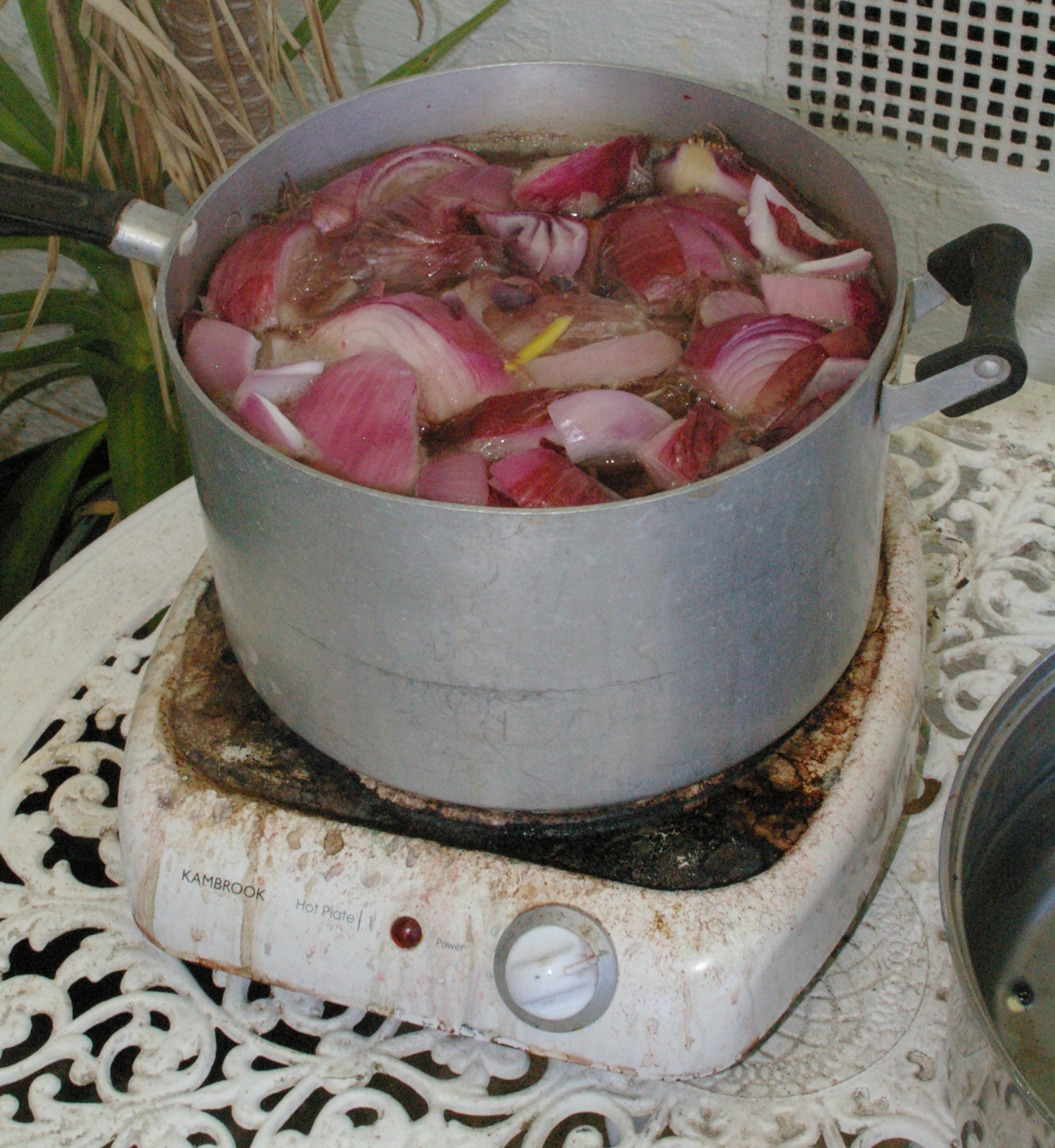

Pole Wrapping.
Pole wrapping is bassically a length of fabric that is bound around a pole and dyed to give different effects. You will get some areas where the dye does not penetrate the fabric as much creating random patterns. For this wrap experiment I took a length of handwoven fabric, woven in cotton and wool. Wool takes up the natural dyes much more readily than the cotton. It was laid out and I scattered an assortment of leaves and flowers over the top and then rolled it up around a length of dowel. It was then bound tightly with string.
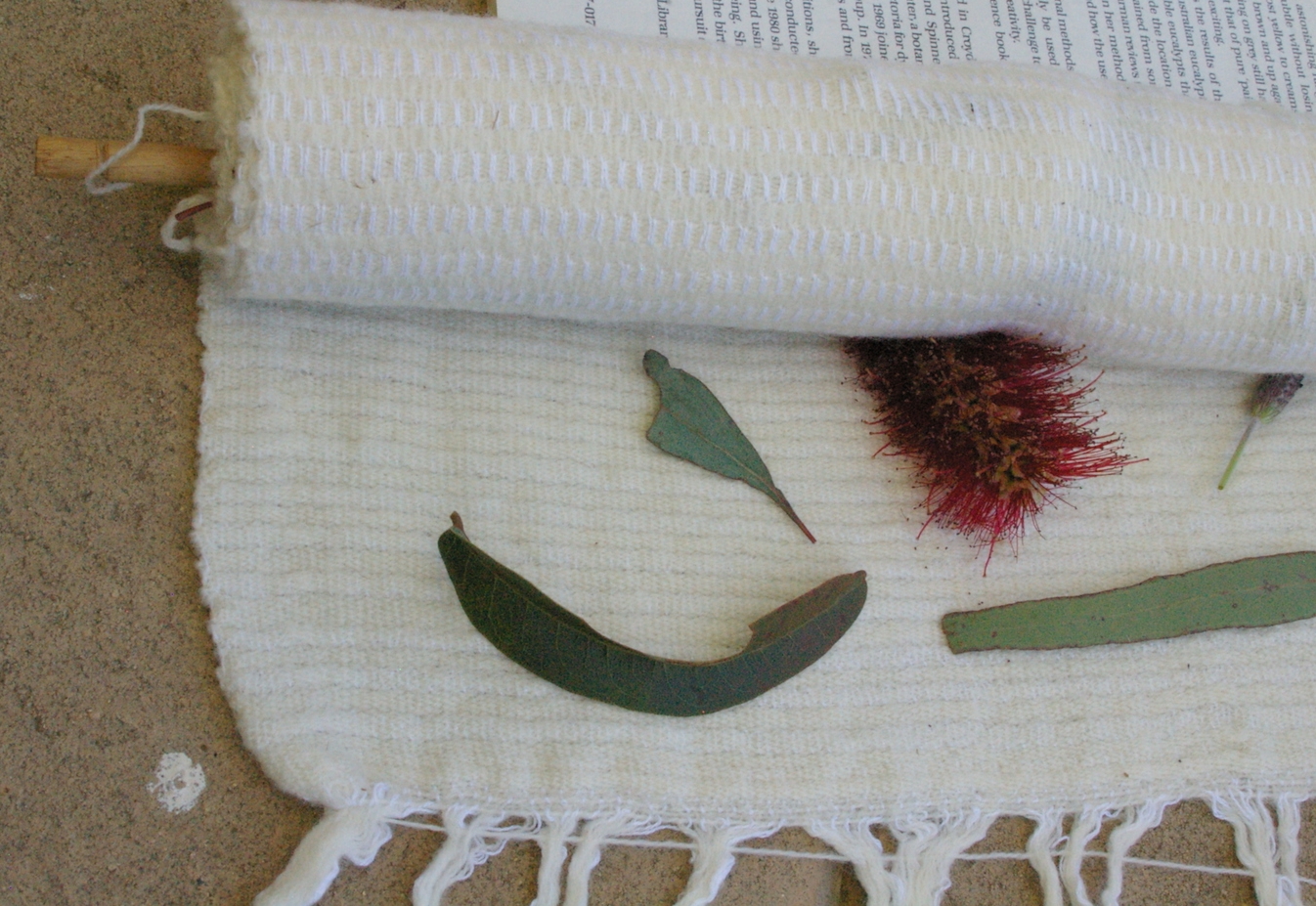
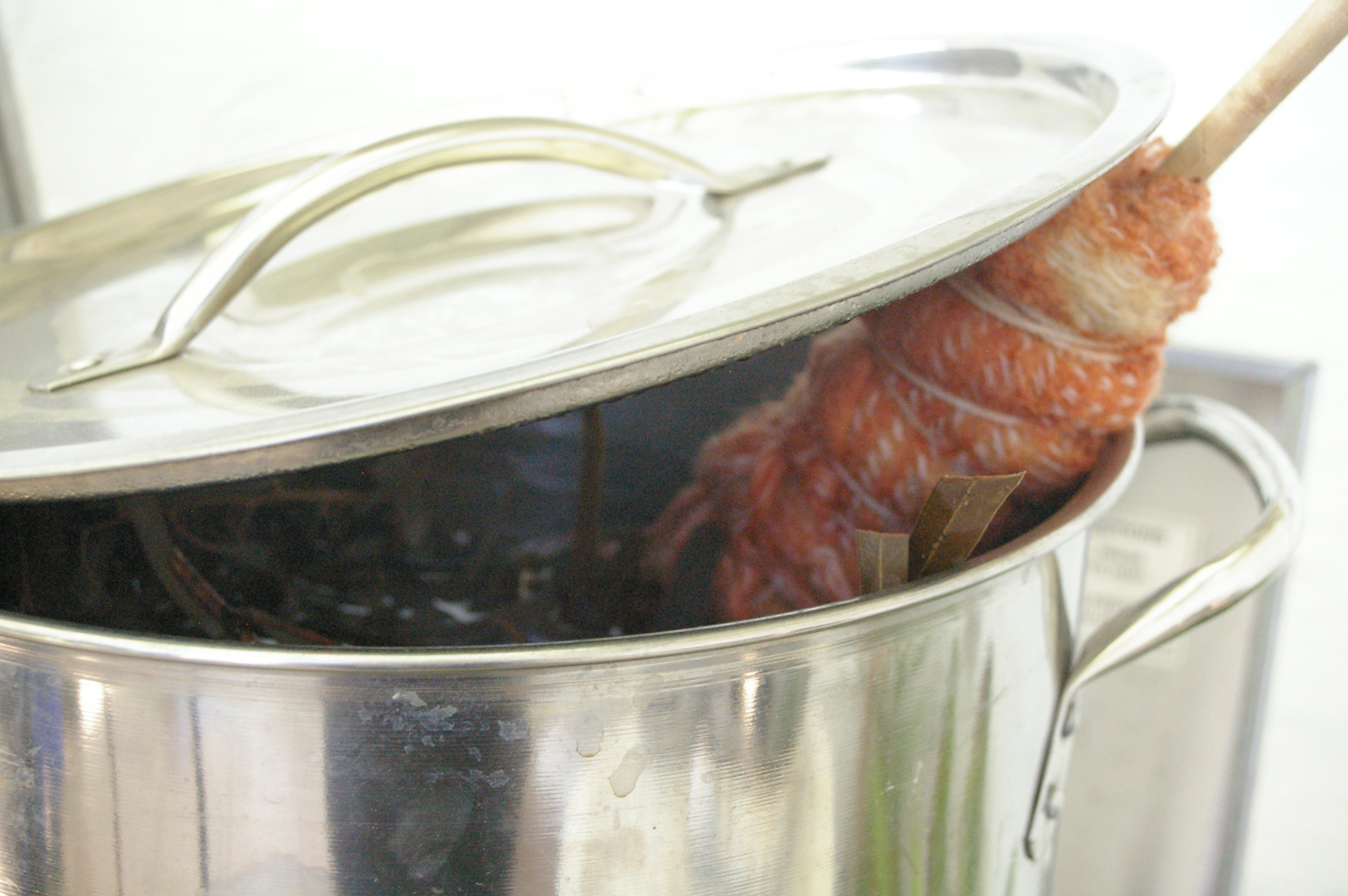
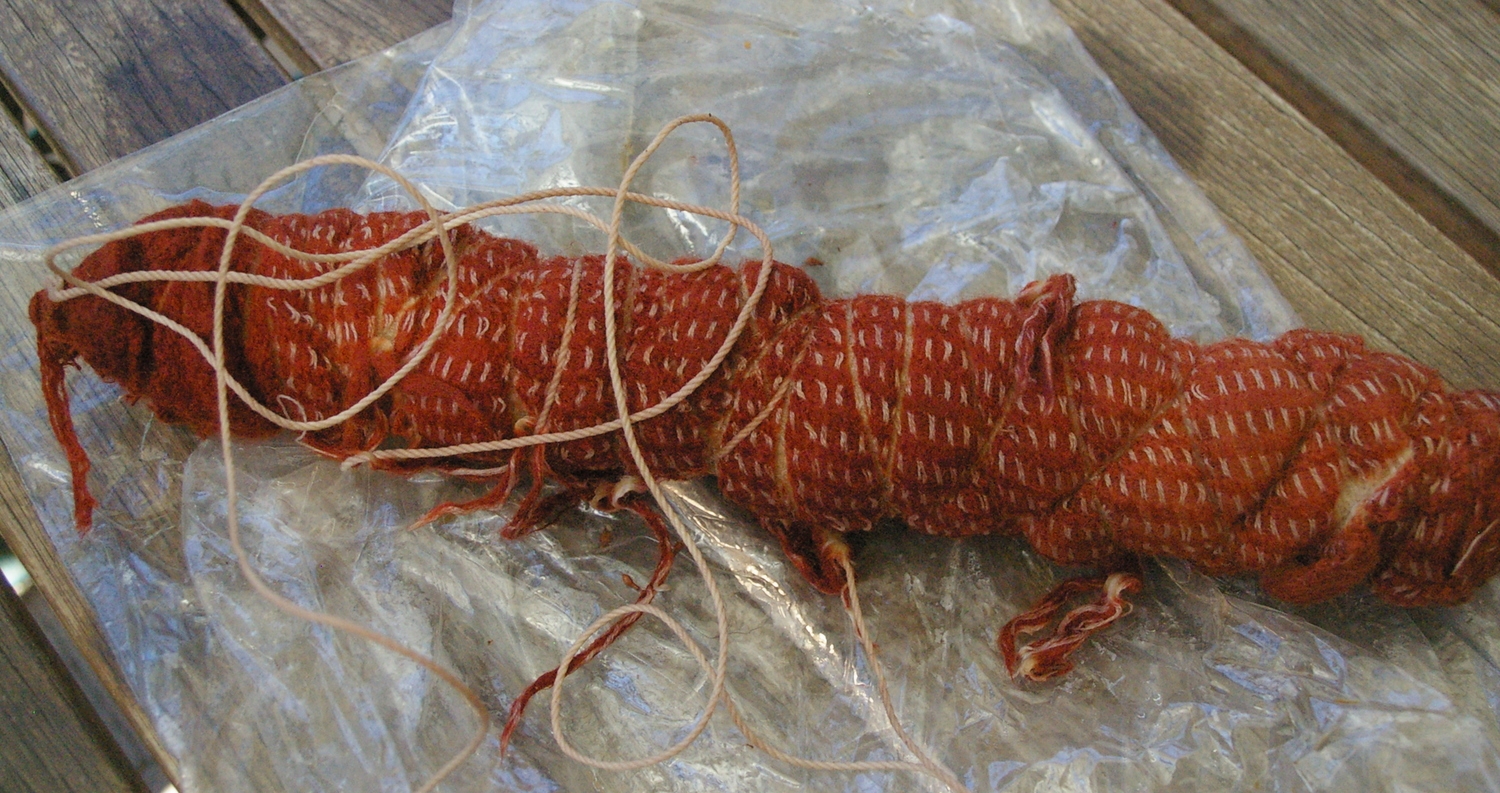
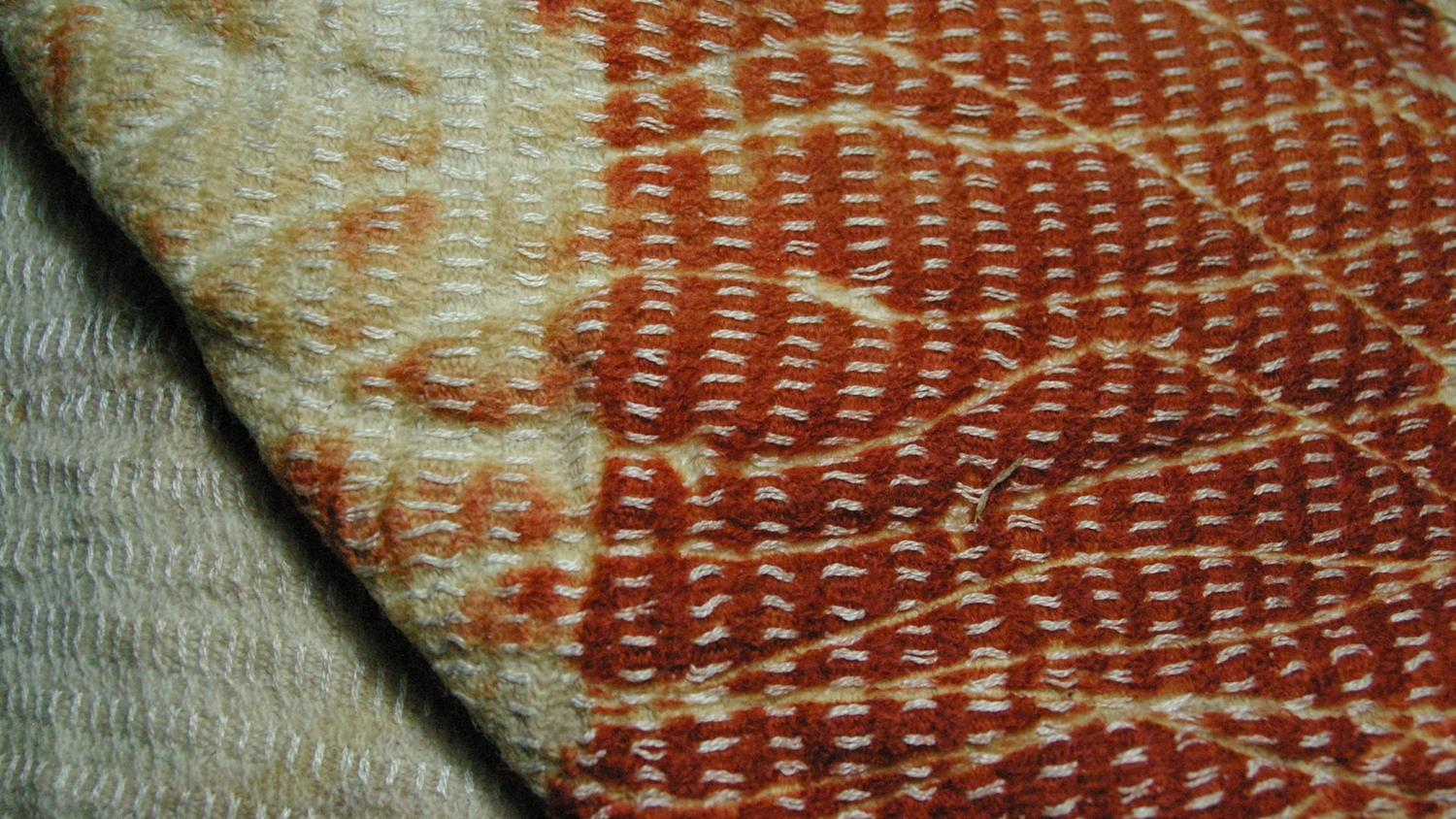
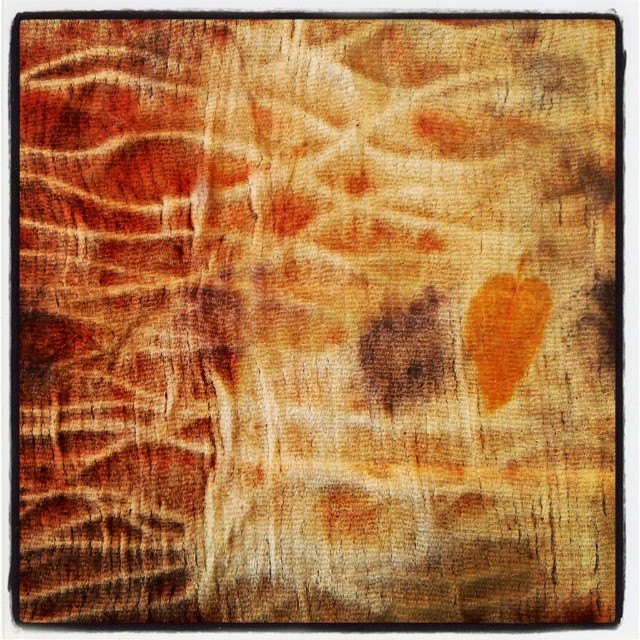
Mordants.
The mordants we used in these experiments were Vinegar, copper, iron.
We were unable to source some Alum this time round but plan to use it in the next round of dyeing.
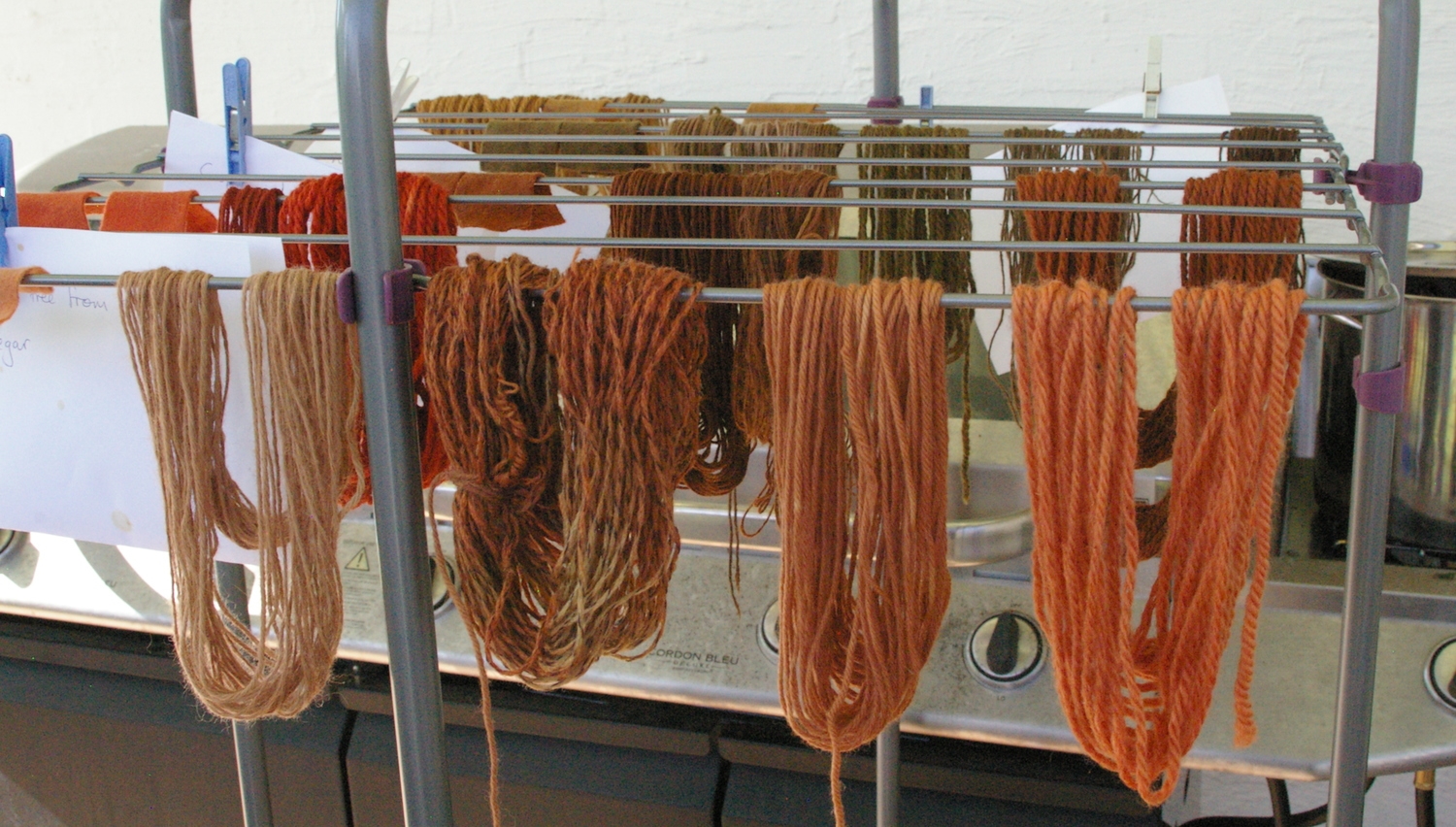
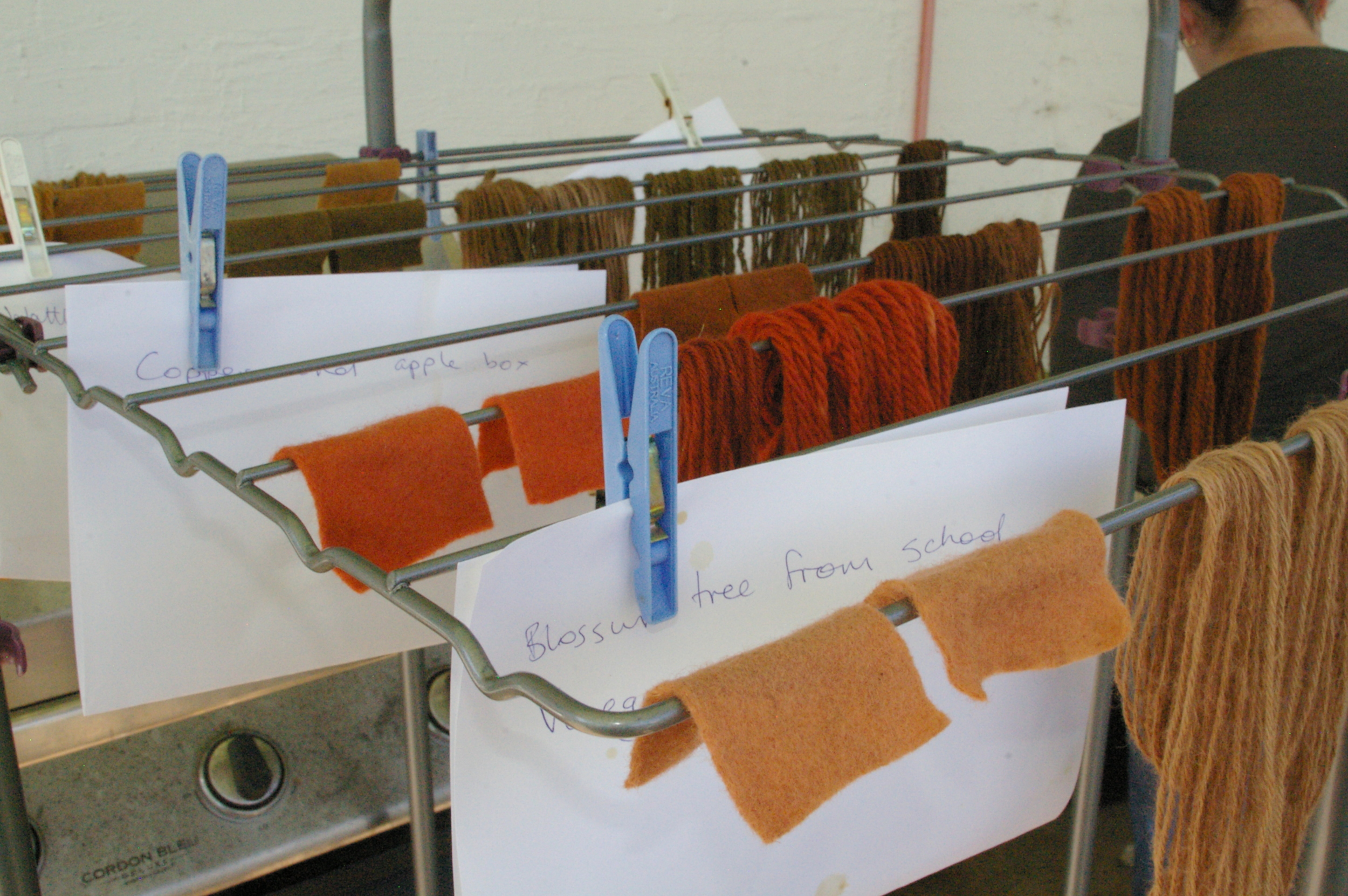
The Colour range so Far....
The plant materials we have used include-
- Eucalyptus mannifera, Brittle gum
- Eucalyptus bridgesiana, Apple box
- Acacia cultriformis, Knife leafed wattle
- Acacia baileyana, Cootamundra wattle
- Red onions
- Ivy leaves
- An pale pink gum blossom- as yet unidentified.


